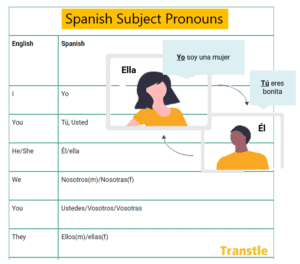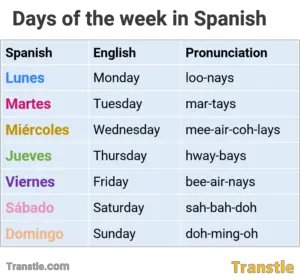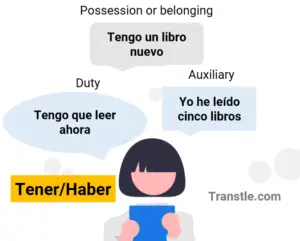Ser and Estar: Guide, Conjugation, Differences & Examples
Ser and Estar
Ser and estar are Spanish verbs that mean “to be”, they are used to express the state, qualities, characteristics or location of people, animals or things, for example, “He is in Spain” or “we are happy”. Although they have the same meaning, there are some differences between them. The general rul is that Ser is used to describe permament qualities or characteristics, while estar describes temporary ones.
Since they are used frequently, it is important to learn the differences between ser and estar early on to construct sentences correctly in Spanish.
Conjugation of ser and estar
In the present tense, ser and estar are conjugated as follows:
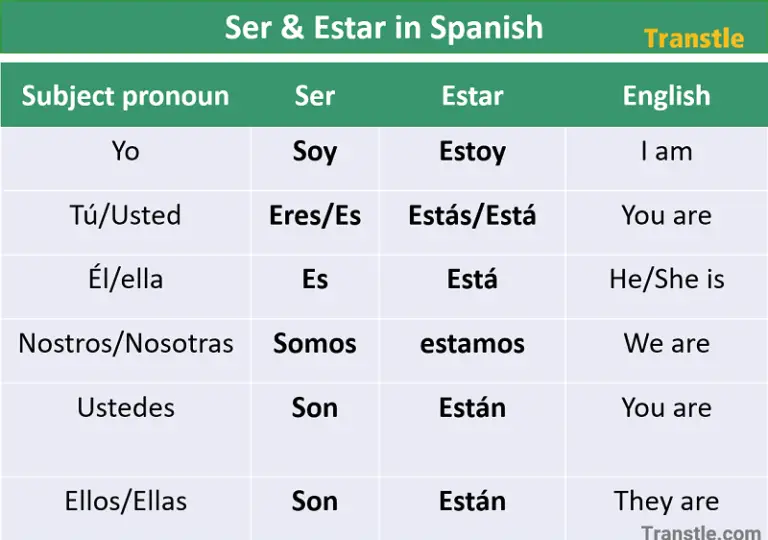
How and when to use Ser and Estar
“Ser” and “estar” are two important verbs in Spanish that both mean “to be”. The general rule and main difference between them is that “ser” is used to describe permanent or almost permanent qualities or characteristics, while “estar” is used to describe temporary ones.
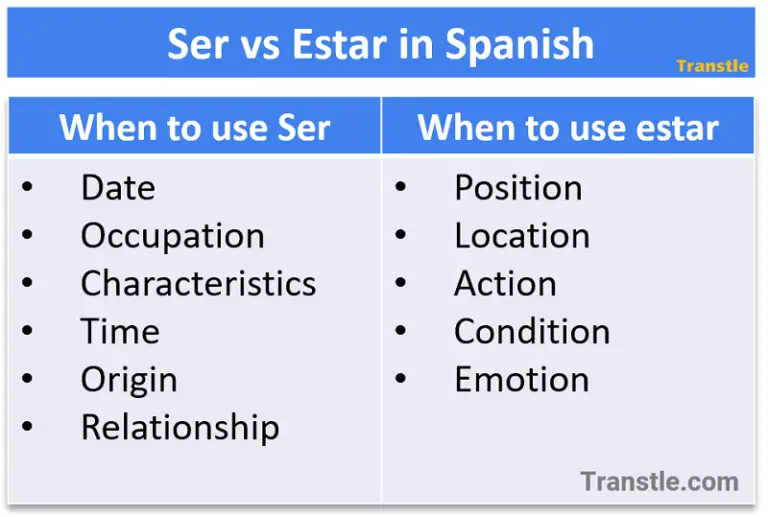
When to use Ser
Ser works with date, occupations, characteristics, time, origin and relationship.
- To say what something or someone is
Yo soy maestra. – I am a teacher Es Alejandra. – It’s Alejandra Brazil es el país más grande de la región. – Brazil is the biggest country in the region. |
- When you talk about a permanent or almost permanent quality
Yo soy latina. – I am latina – I am Latina or Soy Latina. Tu eres alto – You are tall. Él es divertido – He is funny. Ella es venezolana – She is Venezuelan. Nosotros somos muchos estudiantes – We are many students or Somos muchos estudiantes. Son inteligentes – They are intelligent. Es perfecto – It’s perfect or Es perfecto/a (if you want to include the gender of the object) Es de chocolate – It’s made of chocolate. |
- To say where someone or something comes from or their nationality
El tacos son de Mexico – Tacos are from Mexico. Las arepas son venezolanas – Arepas are from Venezuela. Mi familia es de españa – My family is from Spain. |
- To express something belongs to someone
El cuaderno es mío – The notebook is mine. Él es mi hijo – He is my son. Son de ella – They belong to her. |
- To express the current date and hour
Son las 2 en punto – It’s two o’clock. Hoy es viernes – Today is Friday. Ayer fue jueves – Yesterday was Thursday. |
- With the passive voice
Los habanos son fabricados en Cuba – Habanos are made in Cuba. Este postre se come en Italia – This dessert is eaten in Italy. |
- With amounts and calculations
Dos más dos son 4 – Two plus two equals four. Son 10 dólares – It’s 10 dollars. |
- Before an infinitive
El objetivo es aprender – The objective is to learn. La mejor parte es comer – The best part is eating. |
When to use estar
Estar works with posotions, locations, actions, conditions and emotions.
- To express where someone or something is
¡Estás aquí! -You’re here! Estamos en Nápoles – We are in Naples La camisa está en el armario – The shirt is in the closet ¿Dónde está mi papá? – Está en la cocina – Where is my dad? He is in the kitchen |
- Use estar when there is an unexpected change or new characteristic
Estás de mal humor hoy – You’re in a bad mood today. Está hiperactiva – She is hyperactive. Están hermosas esta noche – They look beautiful tonight. Está muy dulce – It’s too sweet. |
- To talk about what someone or something is doing (present continuous)
Está comiendo – She is eating. Estamos leyendo – We are reading. El gato está jugando – The cat is playing. |
- To talk about how someone is (wellbeing or health)
¿Cómo está Susana? – How is Susana? Estoy bien, gracias – I’m fine, thank you. ¿Cómo estás? – How are you? |
- To describe the state of someone or something using past participle as an adjective
El club está abierto – The club is open. El teléfono está apagado – The phone is off. La galleta está mordida – The cookie is bitten. Está destruido – It’s destroyed. |
- Both ser and estar can be used with certain adjectives, but the meaning changes depending on which is used.
Use ser to talk about permanent qualities.
Soy hispano – I’m Hispanic. Eres cocinero – You’re a cook. Los idiomas son interesantes – Languages are interesting. |
- Use estar with temporary states or qualities
¿Está cansado? – Are you tired? Estoy harto de ese ruido – I’m fed up with that noise. |
Ser, Estar and it
Where in English you would use it, to describe an object or an animal, you use Es
Es fácil – It’s easy. Es interesante – It’s interesting. Es para mí – It’s for me. |
Exercises
Now practice what you learn writh the following test or excercises.

Time's up
Read next

